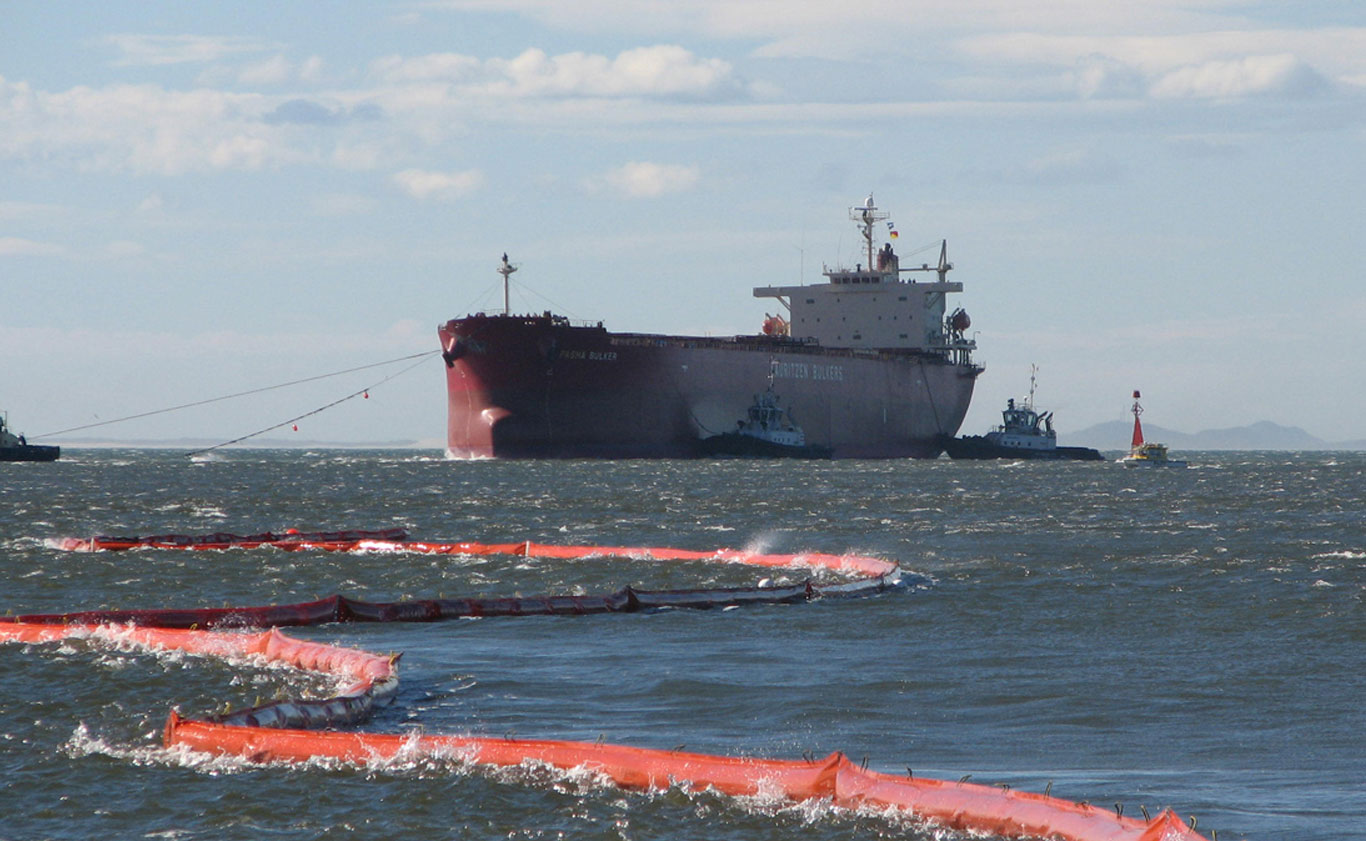
Characteristics of Oil Booms
 Oil containment booms are floating barriers used to contain and control oil spills in oceans, rivers, and lakes. They are designed to prevent oil from spreading and to guide the oil towards collection points for cleanup.
Oil containment booms are floating barriers used to contain and control oil spills in oceans, rivers, and lakes. They are designed to prevent oil from spreading and to guide the oil towards collection points for cleanup.
Oil containment booms are important equipment in responding to oil spills and can help to minimise the environmental impacts.
At Lamor we have the expertise to choose the right technology and tailor a solution that meets the unique needs of our organisation.
Containment booms are usually constructed with durable materials such as PVC, neoprene, or polyurethane and filled with foam or air to provide buoyancy. They come in different lengths and can be connected to form longer barriers
Characteristics
Three factors must be borne in mind when choosing a containment boom: buoyancy, roll response and heave response.
Buoyancy
Is important in order to maintain sufficient freeboard in rough seas. It depends directly on boom volume.
Roll Response
Is the rotation of the boom from rest due to wave, wind or current forces. A high roll angle reduces effective freeboard and draft, thereby decreasing the boom’s containment properties.
Heave Response
Is the ability of the boom to react to the vertical motion of the water surface and is proportional to the lateral area of the boom at the waterline, termed the water plane area. A boom with poor heave response may be submerged by a wave and a boom with good heave response will float above the wave.
Behaviour of different containment boom types
Flat floatation booms have relatively low buoyancy due to their low volume, have poor roll response to wave, wind or current forces and poor heave response due to their low water plane area. However their flat design means they are compact and can be stowed on winders, making them easy to use. They are suitable for use in protected waters such as harbours and lakes.
Cylindrical floatation booms have high buoyancy and maintain freeboard height in rough seas. Roll is kept to a minimum because the skirt moves independently from the floats and is weighed down by the bottom chain. The large water plane area gives good heave response and good wave-following characteristics.
Foam-filled floatation versions can be immediately deployed but are bulky to store, while inflatable floatation versions are either self-inflatable or require compressors for inflation and deployment. However, inflatable versions have the advantage of being stowable on winders, thereby taking up little storage space.
Know More About - Oil Booms
Get Your Free Quote Today!
Tell us about your project needs and we'll provide a custom quote tailored to your specific requirements.
